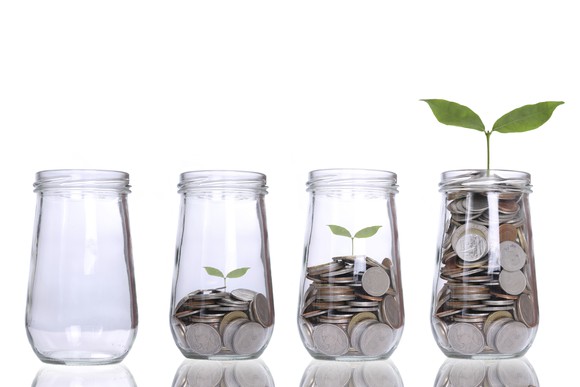Once you retire, you have different needs from your portfolio than you do when you're working. Unless you have a strong, well-funded and inflation-adjusted pension that adequately meets your expenses, chances are that you'll need to pull money out of your portfolio to cover your costs in retirement. That makes stocks inherently riskier for you as a retiree, because your bills won't wait for a bull market to get paid. If you're relying on selling your stocks to cover your costs, you face a very real risk.
Still, if you're anticipating a long retirement, you'll want to remain invested in stocks to give your money a chance of outpacing inflation over time. To balance the need for income with the longer-term growth that stocks can provide, focus on owning companies that pay, and have the potential to increase, dividends. That way, you can have cash coming in that doesn't depend on selling shares.
With that in mind, here are three top stocks for retirees to consider for their portfolios.

Image source: Getty Images.
1. The largest energy infrastructure company in North America
Enbridge (ENB 0.23%) is a Canadian company with a huge presence in the United States as well; it's North America's largest energy infrastructure company. Enbridge makes most of its money delivering energy -- most notably oil and natural gas -- from where it's produced to where it's consumed. It does so largely through a network of pipelines, which are why the company deserves consideration in retirees' portfolios.
When Enbridge builds a pipeline, it really is "digging its own moat" -- erecting a barrier that makes it tougher for competition to enter the space. Pipelines are generally the most economical way to move liquid or gas energy around, but they're expensive to build and often invite controversy when they route through populated areas. That combination means that as tough as it is for Enbridge to operate, it's often even tougher for a competitor to operate on the same routes -- hence the moat.
Enbridge's dividend currently provides a yield slightly above 6%, and the company recently increased that dividend by nearly 10%. Enbridge's commitment to increasing its dividend goes back at least 25 years, and it has paid its shareholders dividends for around 65 years. Note that Enbridge is a Canadian company, so U.S. investors will see their dividend payments fluctuate based on changes in the exchange rate. In addition, U.S. investors who own Enbridge outside of a retirement account will face a Canadian withholding tax.
2. An insurance titan with a rock-solid reputation

Image source: Getty Images.
Prudential Financial (PRU 0.48%) makes a very big deal about its financial strength, using the Rock of Gibraltar as its corporate logo and leveraging it to call out its rock-solid financial position. Prudential does indeed have a strong financial position, boasting a debt-to-equity ratio below 0.6, and billions of dollars in cash and equivalents on its balance sheet. That's fitting for a company in the insurance business; after all, Prudential has to have a lot of cash available to pay claims if they come in above expectations.
Prudential's dividend currently provides a respectable 4.2% yield, and perhaps best of all for investors, the company is only paying out around 42% of its earnings via that dividend. That gives it room to protect its financial strength, invest to grow its business, and potentially even continue to increase the dividend over time as its business continues to grow. Prudential has a decent history of increasing its dividend, though it did take a step backwards during the 2008 financial meltdown.
3. A technology titan that's turning its ship around

Image source: Getty Images.
In its heyday, International Business Machines (IBM +0.18%) was the undisputed ruler of computing. Indeed, the old saying was that "you won't get fired for buying IBM," because the company's reputation for quality was so strong that people were willing to pay up for the IBM name.
As technology advanced, and hardware got fast and cheap enough that others could compete, IBM lost its spot as king of the hill. The company has struggled to consistently grow its top and bottom line in recent years. In response, it began to pivot to embrace newer technology and open-source trends like Linux, in order to build its cloud business and remain relevant.
The turnaround appears to be making progress, though it's going more slowly than many would like to see. Ironically, that's what makes IBM worth considering as an investment: Because of that slow progress, investors aren't expecting much. So the company trades at around 10 times forward earnings, and its dividend clocks in at a juicy 4.8% yield.
Despite its struggles, IBM continues to pay -- and increase -- dividends. The company has paid them uninterrupted since 1916, and has increased its payment for 24 straight years. As around 75% of earnings are consumed by the dividend, investors shouldn't expect much (if any) dividend growth until the turnaround truly takes hold.
Still, despite its struggles, IBM remains profitable and actively engaged in driving its turnaround. Investors with a long-term focus have the chance to get paid reasonably well for their patience, and to wind up with shares at reasonable prices as the turnaround takes hold.
Income today, potential for growth tomorrow
While Enbridge, Prudential, and IBM all operate in different industries, they all offer investors decent current income today and the potential for more income growth in the future.
Although dividends are never guaranteed payments, these three companies have shown a solid level of commitment to theirs. That helps them look like reasonable investments for retirees to consider adding to their portfolios.
